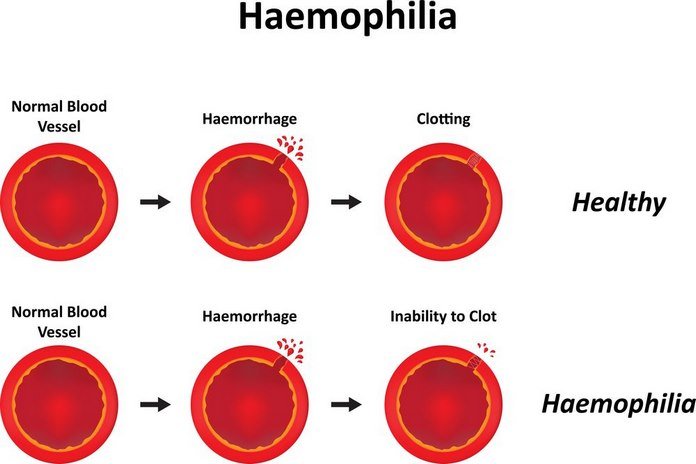Hemophilia B
Just like hemophilia A, type B is also a genetic disorder, and about 30 percent of cases occur due to spontaneous mutations. Hemophilia B is not as common as type A, and it is almost four times less common than type A. The pattern of inheritance is also the same as hemophilia A as it is also an X-linked disorder. For the disease to be dominant, it is necessary to have both faulty genes in females and one faulty X chromosome in males. Hemophilia B develops as a result of a deficiency of factor IX. A lack of complete absence of factor IX leads to hemophilia B. These individuals experience longer bleeds than usual. Bleeding can also occur internally in the joints and muscles. There are different stages of this disease, depending on the ratio of clotting factor IX in the plasma. Usually, factor IX is present in the ratio of 50 to 150 percent in the blood. In diseases condition, the clotting factor becomes less than 50 percent. Symptoms and severity of the disease are dependent on the level of clotting factor in the plasma.
- Mild hemophilia B:The factor IX is present in 6 to 49 percent. Hemorrhage, heavy menstrual cycles, and prolonged bleeding are some of the symptoms of mild hemophilia B, which mostly occur in adulthood.
- Moderate hemophilia B:1 to 5 percent ratio of factor IX is present in moderate hemophilia.
- Severe hemophilia B:Less than 1 percent of factor IX is present in severe hemophilia. Hard to stop bleeding, and bleeding without an apparent cause are some of the symptoms of severe hemophilia.
Treatment of hemophilia B involves the intravenous administration of factor IX.

